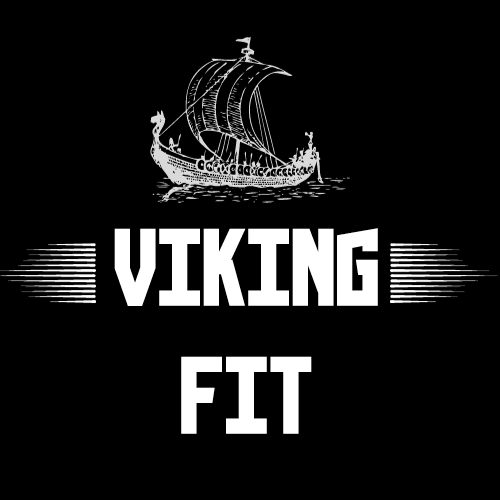“Discover 10 highly effective cable back exercises to strengthen and define your upper body. From Lat pulldowns to cable shrugs, learn how to target key back muscles for maximum results.”
Table of Contents
10 Effective Cable Back Exercises for a Strong and Sculpted Upper Body
Introduction: Achieving a strong and sculpted back is essential for overall upper body strength and aesthetics. Cable back exercises offer a versatile and effective way to target various muscles in your back, including the rhomboids, and traps. In this guide, we’ll explore 10 top cable back exercises to help you build a powerful and well-defined back.
Cable Lat Pulldown:
The cable lat pulldown is a classic exercise that targets the latissimus dorsi muscles, which are the large muscles of the back responsible for pulling movements. Adjust the cable pulley to a high position, grasp the bar with an overhand grip, and pull it down towards your chest while keeping your back straight. Slowly release the weight back up and repeat for a full set.

Seated Cable Row:
The seated cable row is an excellent exercise for targeting the middle and upper back muscles, including the rhomboids and traps. Sit on the rowing machine with your feet securely placed on the platform, grab the handles with an overhand grip, and pull them towards your torso while squeezing your shoulder blades together. Slowly release the handles back to the starting position and repeat.

Cable Face Pull:
The cable face pull is a great exercise for targeting the rear deltoids and upper back muscles while also improving shoulder stability. Attach a rope handle to the cable machine at chest height, grasp the handles with an overhand grip, and pull them towards your face while keeping your elbows high and wide. Squeeze your shoulder blades together at the peak of the movement and slowly return to the starting position.
Straight Arm Cable Pulldown:
The straight arm cable pulldown targets the lats and provides an excellent stretch through the entire back. Stand facing the cable machine with the pulley set at a high position, grab the handle with an overhand grip, and extend your arms straight down towards your thighs. Keeping your arms straight, pull the handle down towards your thighs while engaging your lats, then slowly return to the starting position.
Cable Deadlift:
The cable deadlift is a variation of the traditional deadlift that targets the entire posterior chain, including the lower back, glutes, and hamstrings. Attach a straight bar to the cable machine, stand with your feet shoulder-width apart, and grasp the bar with an overhand grip. Keeping your back straight and core engaged, hinge at the hips and lower the bar towards the ground, then drive through your heels to return to the starting position.
Single Arm Cable Row:
The single arm cable row is a unilateral exercise that helps correct muscle imbalances and strengthens the back muscles individually. Attach a single handle to the cable machine at waist height, grasp the handle with one hand, and step back to create tension in the cable. Pull the handle towards your torso while keeping your back straight and core engaged, then slowly return to the starting position and repeat on the opposite side.
Cable Pullover:
The cable pullover is an effective exercise for targeting the lats, chest, and triceps while also improving shoulder mobility. Attach a straight bar or rope handle to the cable machine at a high position, grasp the handle with an overhand grip, and stand with your feet shoulder-width apart. Keeping a slight bend in your elbows, pull the handle down and slightly forward while engaging your lats, then slowly return to the starting position.

Reverse Cable Fly:
The reverse cable fly is a great exercise for targeting the rear deltoids and upper back muscles, helping to improve posture and shoulder stability. Attach two D-handles to the cable machine at chest height, grasp the handles with an overhand grip, and step forward to create tension in the cables. Keeping a slight bend in your elbows, squeeze your shoulder blades together as you pull the handles out to the sides, then slowly return to the starting position.
Cable Shrug:
The cable shrug is an effective exercise for targeting the trapezius muscles, which are responsible for shoulder elevation and stabilization. Attach a straight bar or rope handle to the cable machine at waist height, grasp the handle with an overhand grip, and stand with your feet shoulder-width apart. Elevate your shoulders towards your ears in a controlled manner, then slowly lower them back down to the starting position.
Cable Rotational Row:
The cable rotational row is a dynamic exercise that targets the entire back while also engaging the core and oblique muscles. Attach a single handle to the cable machine at waist height, grasp the handle with one hand, and step back to create tension in the cable. Pull the handle towards your torso while rotating your body towards the anchor point, then return to the starting position and repeat on the opposite side.

The Importance of Cable Back Exercises
Cable back exercises are a cornerstone of any comprehensive workout routine, offering numerous benefits beyond mere aesthetics. In this article, we’ll explore the significance of incorporating cable back exercises into your training regimen and how they contribute to overall strength, stability, and physical well-being.
- Targeted Muscle Engagement: Cable back exercises provide targeted stimulation to key muscles in the back, including the latissimus dorsi, rhomboids, traps, and rear deltoids. Unlike free weights, which rely on gravity for resistance, cables maintain constant tension throughout the entire range of motion, ensuring optimal muscle activation and development.
- Improved Functional Strength: A strong back is essential for everyday activities and athletic performance. Cable exercises mimic real-life movement patterns, such as pulling, rowing, and lifting, making them highly functional for improving strength and stability in activities ranging from lifting groceries to swinging a golf club.
- Enhanced Muscle Symmetry and Balance: Unilateral cable exercises, such as single-arm rows and cable pullovers, help correct muscle imbalances between the left and right sides of the body. By working each side independently, you can address asymmetries and promote balanced muscle development, reducing the risk of injury and enhancing overall aesthetics.
- Better Posture and Spinal Health: Weaknesses in the back muscles can lead to poor posture, back pain, and spinal misalignment. Cable exercises target the muscles responsible for spinal stabilization, helping to improve posture, alleviate discomfort, and reduce the risk of injury. Strengthening the back can also alleviate tension in the neck and shoulders associated with prolonged sitting and poor posture.
- Versatility and Variety: One of the greatest advantages of cable machines is their versatility. With various attachments and adjustable pulley heights, you can perform a wide range of back exercises, from traditional lat pulldowns to innovative rotational rows. This versatility allows for greater exercise variety, preventing workout boredom and ensuring continued progress over time.
- Focus on Mind-Muscle Connection: Cable exercises promote a strong mind-muscle connection, requiring concentration and control throughout each repetition. By focusing on proper form and engaging the target muscles intentionally, you can maximize muscle recruitment and enhance the effectiveness of your workouts.
- Injury Prevention and Rehabilitation: Strong back muscles play a crucial role in injury prevention and rehabilitation. By strengthening the muscles surrounding the spine, cables can help stabilize the core, reduce the risk of back injuries, and support the rehabilitation process for existing injuries, such as herniated discs or muscle strains. Top 10 Signs of Gaining Muscle In Female : A Comprehensive
Conclusion:
Incorporating cable back exercises into your workout routine can help you build a strong, balanced, and well-defined back. Whether you’re aiming to improve your strength, posture, or overall physique, these 10 exercises offer a variety of options to target different muscle groups effectively. Remember to maintain proper form, control the weight, and gradually increase the intensity as you progress. With consistency and dedication, you can achieve your goals of a strong and sculpted upper body.




Pingback: Vegan Creatine: Enhancing Athletic Performance Naturally" - Vikingfit22.com